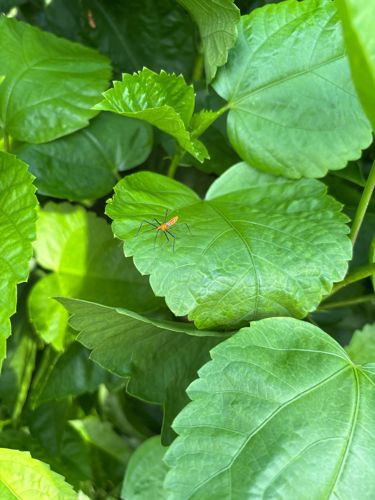Assassin Bug (Nymph)
Scientific Name: Reduviidae (nymph)
Order & Family: Order: Hemiptera, Family: Reduviidae
Size: Nymphs can range from a few millimeters up to 1-2 cm depending on their instar and species. Adults range greatly in size from 5 mm to 40 mm (0.2 to 1.6 inches).

Natural Habitat
Found in a wide range of habitats, including gardens, agricultural fields, forests, grasslands, and even urban areas, often camouflaged among foliage, flowers, or under rocks and debris.
Diet & Feeding
Strictly carnivorous, feeding on a wide variety of other insects and arthropods, including many pest insects. Nymphs feed on smaller prey items.
Behavior Patterns
Assassin bugs are generally solitary predatory insects. They move stealthily to ambush their prey or may actively hunt. Some species exhibit parental care. Nymphs typically resemble smaller versions of the adults. They use their strong, curved proboscis to inject paralyzing and liquefying saliva into their prey before sucking out the bodily fluids.
Risks & Benefits
Benefits: Assassin bugs are highly beneficial insects as natural predators of many garden and agricultural pests, helping to control populations of aphids, caterpillars, leafhoppers, and other damaging insects. Risks: While generally not aggressive towards humans, an assassin bug can deliver a painful bite if provoked or handled carelessly. The bite is not venomous to humans but can cause temporary localized pain and swelling. Some species, like kissing bugs, can transmit Chagas disease, but the one pictured does not appear to be a kissing bug.
Identified on: 8/13/2025